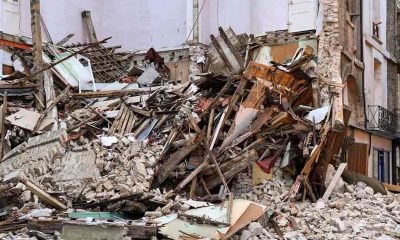Top Stories
U.S. Public Forests Stand to Earn from Carbon Offset Projects
Published
3 years agoon

A considerable number of state and local governments are now enrolling public forests in carbon offset projects that are deemed dubious. This endeavor has the potential to earn them millions of dollars but will deliver only very few new climate benefits. It will offer minimal help in the fight against climate change while the big corporations are being credited for reducing carbon emissions.
This undertaking precisely illustrates that the carbon market delivers the lowest benefits than what is projected. Initially, the intention was to use these markets as a way for corporations to cut down on their carbon footprints. But obviously, this isn’t what’s happening.
Inked Agreements
Along with five counties in Wisconsin, the whole state of Michigan has just finished inking agreements with Blue Source in Salt Lake City. These governments signed up with the carbon development firm to create an estimated 800,000 acres of projects. This is around three times more public forests than what is now generating carbon credits in the U.S.
Later this year, up to the next, these projects are expected to start selling credits. Aside from these, at least a dozen more counties in Wisconsin and various other states are now considering following suit. Interviews with public officials and county documents can attest to this.
These agreements are anticipated to generate approximately 10 million carbon credits over the next ten years. This is equivalent to one year of pollution from a large coal power plant or the emissions from over ten million vehicles. These government agencies can get credits from these reductions in emissions and sell them to companies. These corporations, in turn, can subtract the volume of pollution from their lodgers.
However, these claims are expected to be significantly exaggerated. For every single carbon credit, one ton of carbon dioxide is represented. These will be absorbed due to the promise of payments that cause landowners to change their practices. Public records reviewed tell us that overseers of these public forests have no plans to change the management of their trees.
The data was gathered from records reviewed by Bloomberg Green as well as interviews with forest managers. They will then capitalize on the weak rules governing the carbon markets to gain payments for the continued forest practices they have been using for decades.
Impending Surge
The carbon industry is sure to feel the impending surge in dubious offsets, and it will be a problematic eventuality. In contrast, the offsets market has seen more than $1 billion in waves for the very first time. After a flurry of criticisms, this has cast doubts on its future.
Last month, Bloomberg Green reported on the revelation of a U.S. timber executive that most of these offset projects are defrauding the climate. On the other hand, controversy is still very much alive in the offsets industry in Australia. It comes right after a key official described these carbon offsets as shams.
Blue Source usually takes between 10 to 33% of a carbon offset project’s proceeds. Thus, it stands to earn millions of dollars from these newly-signed agreements. According to Joshua Strauss, Blue Source executive vice president, these projects meet the highest quality standards.
Climate-Friendly Practices
Supposedly, public forest carbon offset projects should bring about climate-friendly practices even in the event of the absence of carbon payments. In addition, experts on carbon projects say that these have to be based on realistic situations to make the climate claims trustworthy.
County officials in Wisconsin will lock in the foregoing practices for years to come. If ever carbon prices get high enough, they can compete with timber values. This will encourage harvesting less down the road, according to Mike Peterson, Washburn County forest administrator.
You may like
Top Stories
Scientists May Soon Predict Earthquakes with 80% Accuracy Two Days in Advance
Published
5 days agoon
July 25, 2025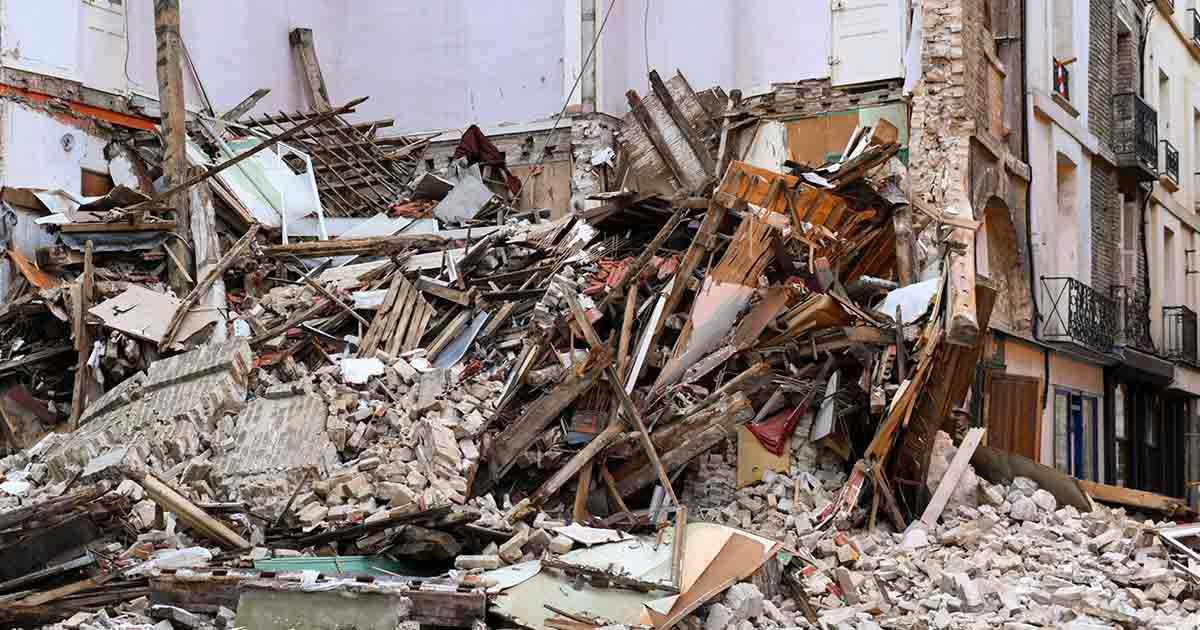
There are many ways that Earth hints an earthquake is coming. Sometimes it’s through the groundwater level. In the past, scientists have used radon to predict seismic movement. But none of these gives us an accurate picture of the ‘strength of earthquakes. Nor do they tell us how long it will last and where it will strike. If only there were a method to predict earthquakes with 80% accuracy, then preparedness and response would be a lot more efficient.
It used to seem impossible; after all, studying earthquakes was a complex puzzle that had confounded scientists for decades. That is—until now. Recently, Israeli scientists have discovered a way to predict earthquakes with 80% accuracy 48 hours before they strike. A joint team from Ariel University and the Center for Research and Development Eastern Branch made the discovery.
Their peer-reviewed study, which detailed how the system works, was published in the science journal Remote Sensing in May. With the effects of earthquakes on human ecosystems, this discovery may provide humans with the advantage they need.
How do researchers predict earthquakes with 80% accuracy
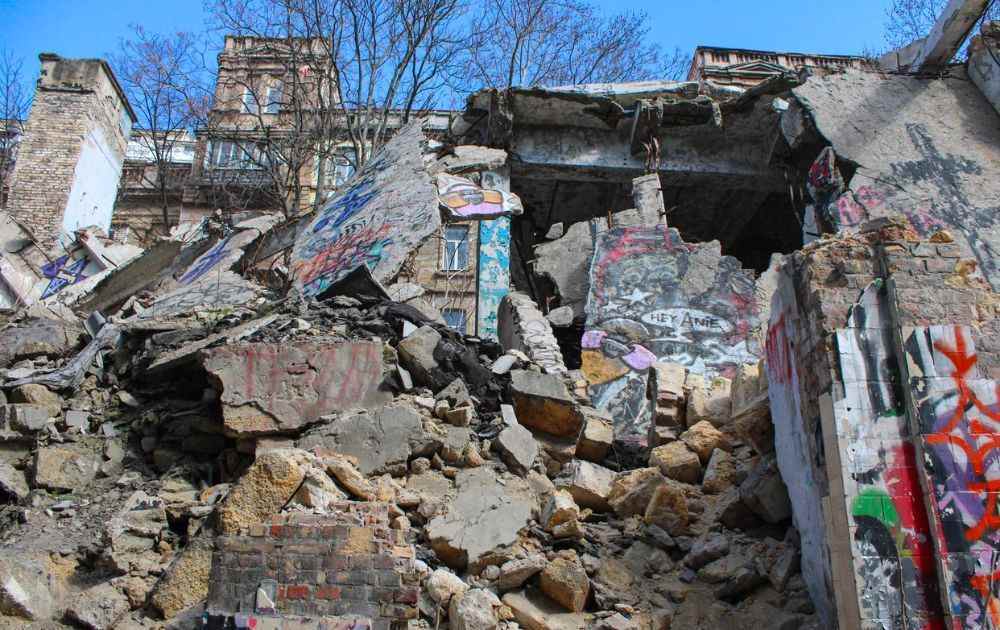
Earthquakes, like many seismic events, are quite hard to predict. It’s difficult to read the Earth’s movements. And most scientists struggle to read signals in time to send out warnings.
Granted, there are various ways that scientists currently use to predict quakes. But these don’t tell us how long, how strong, and where these tremors will be felt. In short, though predicting earthquakes is essential, we don’t have a great way of doing it yet.
So, a system that predicts earthquakes with 80% accuracy 48 hours before strikes can help us greatly.
But Israelian researchers have used an unlikely method to trace tremors and quakes: the sky. Or specifically, the ionosphere. This is the part of the sky that meets the vacuum of space.
The scientists used a GPS map of the ionosphere’s total electron content. They combined this with their machine learning techniques on a support vector machine algorithm. Using these two, the researchers calculated the electron charge density of the ionosphere.
Using this method, scientists have been able to predict major earthquakes over the last 20 years. They classified “major” as an event with an Mw of 6 or higher on the Moment magnitude scale. This discovery proved that their systems predict earthquakes with 80% accuracy.
They also managed to predict with 87.5% accuracy areas where the quakes will not hit.
The study was made by Dr. Yuval Reuvani, Dr. Li-Ad Gotlieb, Dr. Nimrod Imbar, and graduate student Said Asali. The study was funded by Israel’s Ministry of Energy and the Israel Science Foundation.
How can this be applied?
Earthquakes carry with them a slew of other risks. Therefore, it’s essential that this discovery can be applied in real-life situations.
With the new tech, countries near the Rim Of Fire may have a better chance of bracing for quakes. Major earthquakes can cause massive destruction to landscapes and communities. This is especially true for individuals living in mountains and other sloped areas. Things get even more dangerous in cities, where people are packed tightly in high-rise buildings.
Worse, aftershocks can trigger tsunami waves, making them dangerous for coastal provinces. Without a solid technology to predict quakes, a robust natural disaster could wipe out entire cities. And often, it takes years to recover from natural disasters.
Furthermore, some studies point out that climate change can increase the likelihood of earthquakes. With rising temperatures, it’s not hard to trigger earthquake faults with rising sea levels. Since temperatures have tipped nature’s balance, there’s no telling which way the causes of earthquakes can come from.
So, a system that predicts earthquakes with 80% accuracy 48 hours before is advantageous, especially if we’re all waiting for the big one. Scientists may soon detect earthquakes two days before they strike.
And for other news stories, read more here at Owner’s Mag!
Business
Adam Neumann: Crashed WeWork, Got $350M from Silicon Valley
Published
6 days agoon
July 24, 2025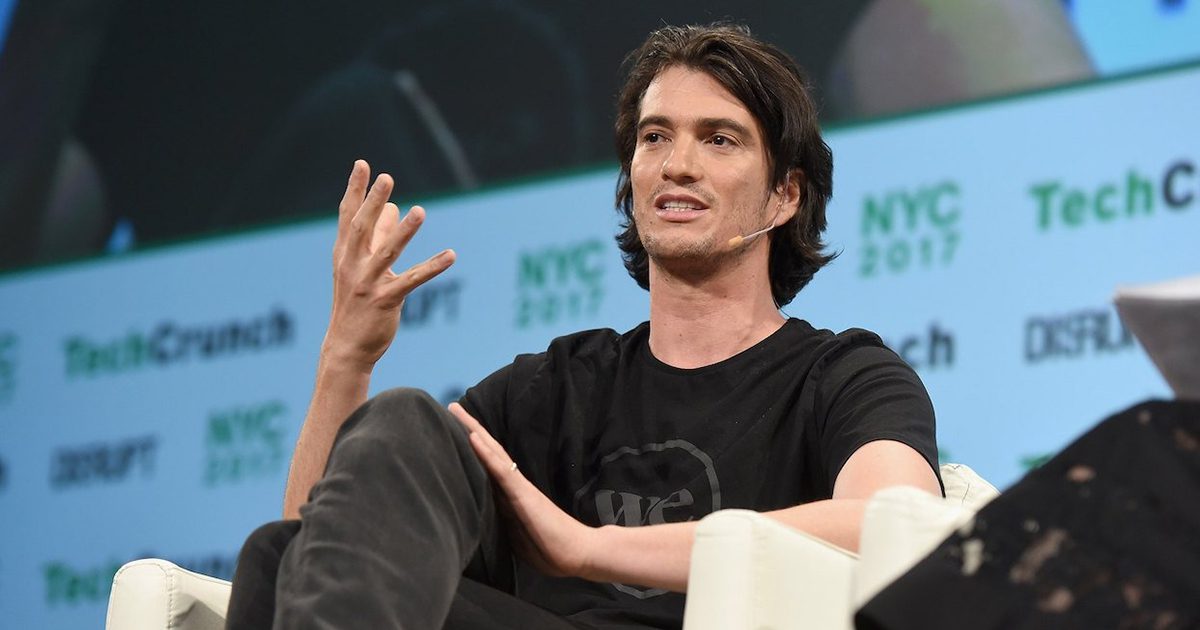
Was it good for the economy or an embarrassment for Silicon Valley? The bottom line is, Adam Neumann is now $350 million richer. The current state of the world has divided us into two camps: those who believe we’re headed for a recession and those who think it’s just a rough patch we’re experiencing.
Marc Andreessen, co-founder of the venture capital firm Andreessen Horowitz, announced a massive investment in Flow. It is the real estate company of Adam Neumann, who dragged WeWork from a $47 billion valuation into bankruptcy in just six weeks.
On the Optimistic Side

Image credit: VOX
Economists who lean towards the optimistic side point us in a “not a recession” direction. Proof of this is that no company would give away $350 million if it were experiencing a decline in business. Silicon Valley has just handed ousted WeWork founder Adam Neumann, the guy who crashed WeWork, just that amount.
This may be a good sign that the economy is indeed not going down the dumps as some would want to believe. However, it is an embarrassment for Silicon Valley in particular and the tech industry as a whole. A founder of Y Combinator said redemption is easy for a white guy who f*cked up in the biggest ways and is incredibly wealthy. It’s saddening that not everyone has those qualifications.
Adam Neumann Now

During his WeWork days, Adam Neumann came up with the concept of WeLive. Now, his new idea is a rebrand of WeLive, called Flow. It aims to own and manage apartments with the special Adam Neumann touch, which borders on being obsessive and faddish.
In his statement, Andreessen seems to believe that the housing problem in the US stems from a lack of branding. That is, apartments are not stylish or sexy enough, which is an about-face from what the real issues are: there aren’t enough supplies, plus the high costs of renting.
This is in contrast to what Andreessen said two years ago, that we should be building things. Neumann, on the other hand, plans to acquire already existing buildings to turn them into giant playhouses for adults. That, with a bit of glamming and styling, the housing problem would be easily solved.
In a letter to the mayor of Atherton, California, Andreeseen and his wife said that multifamily housing zones would “massively” decrease the values of their homes. This is in response to the city’s efforts to address the housing shortage. The couple also said that these houses would reduce the quality of their lives as well as their neighbors’ and will increase noise pollution and traffic immensely.
Flow
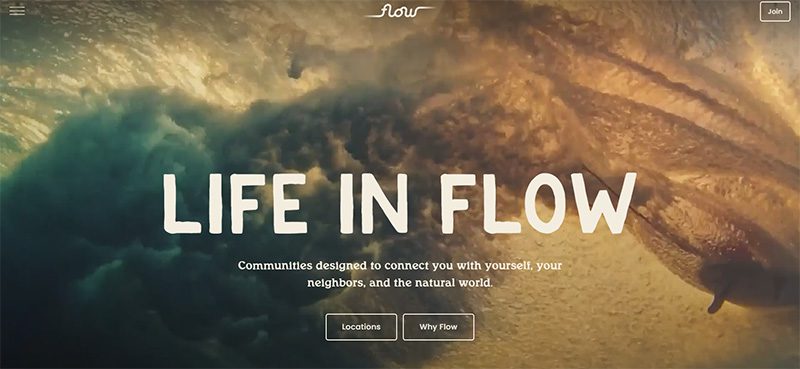
According to Andreessen, Flow will offer renters the opportunity to build equity in their apartments. He didn’t provide details and how it would work, though. Vicki Bryan, a credit analyst and the CEO of Bond Angle, says that in that case, the renters would only get a microscopic share, which amounts to almost nothing.
The Flow deal is met with negativity, as it is seen as a quick way for Silicon Valley to throw money around. The concept does not seem to address a real problem, and worse, it’s going to be run by Neumann. Many liken his business skills to those of a child let loose in a park with a sugar high.
This will be an embarrassment to Silicon Valley, which has, over the past few decades, delivered little to no innovations amid being awash with money. As for Adam Neumann now, he should have learned something from the WeWork fiasco, but it seems he has not.
Technology
Virtual Reality Exhibit Carne Y Arena: The Refugees’ Plight
Published
2 weeks agoon
July 17, 2025
In some ways, we are all familiar with the human plight of refugees and immigrants. Still, sometimes, it’s easy to turn a blind eye when we’re all preoccupied with our daily lives.
Carne y Arena, an immersive virtual reality experience about the human condition of immigrants and refugees, was available at KANEKO on Sept. 10, 2022. Kaneko collaborated with Emerson Collective, PHI Studio, and Legendary Entertainment to bring CARNE y ARENA to Nebraska after several sold-out runs in the United States and abroad. The exhibit pays tribute to the migrant’s border crossing in a way that emphasizes the value of being mindful of your surroundings and paying attention to what is happening around you.
It is the brainchild of Academy Award-winning author and director Alejandro G. Iñárritu. Carne y Arena was the first VR experience chosen as part of the festival’s Official Selection when it debuted at the 70th Festival de Cannes in 2017.
Iárritu said that his conversations with numerous immigrants from Latin America who managed to cross the border served as the foundation for Carne y Arena.
“During the making of this project, I had the privilege of meeting and interviewing many Mexican and Central American refugees,” Iñárritu said in an interview shared by the Nasher Sculpture Center.
The director said the refugees’ life stories “haunted” him, and so he invited some of them to collaborate with him on the project. Iñárritu says he intended to experiment with VR technology to explore the human condition and, in doing so, break the dictatorship of the frame—or the perspective within which things are observed. He wanted to claim the space to allow the observer to go through a “direct experience walking in the immigrants’ feet, under their skin, and into their hearts.”
The Interactive Experience at Carne Y Arena

Carne y Arena is an interactive experience so that visitors can use their hands to feel the migration process and learn about critical moments that led up to that point in a migrant’s journey.
According to the Nasher Sculpture Center, the immersive experience was a 20-minute solo journey that focuses on a multi-narrative virtual reality sequence. In fact, it’s based on true accounts as reenacted by Central American and Mexican refugees. That said, the lines between subject and bystander are blurred and are bound together through the state-of-the-art immersive tech. Just as visitors walk through a vast, sand-filled space, they witness a fragment of a refugee’s personal journey.
Docubase also described the virtual experience in detail. According to their account, there were three sections available during the experience. Participants left their shoes and other things in a locker in the “detention room”. After donning a headset, headphones, and a backpack device, participants entered a sand-filled, dark, and spacious area where they experienced a 6.5-minute virtual reality scenario that took them to the Chihuahuan Desert. Participants in the VR experience joined a group of migrants escorted by a coyote across the border into the US. In a different chamber, a video art installation reflected the experiences of migrants and refugees who fled El Salvador, Honduras, Guatemala, and Mexico, making up the third part of the experience.
Throughout the run of Carne y Arena, virtual and live programming took place, with additional community partners presenting content and events related to their exhibitions and programs. The exhibit areas were designed to allow only one person at a time to move through them, limiting encounters and respecting distances safely and comfortably.
Kaneko also mentioned that the exhibit was unsuitable for minors under 13.

Scientists May Soon Predict Earthquakes with 80% Accuracy Two Days in Advance

Adam Neumann: Crashed WeWork, Got $350M from Silicon Valley

The Best Telescopes of 2025 for the BEST Viewing Experience

Bit.ai Review for Businesses in 2025: Is It Still Worth It?

Should I Buy an Electric Scooter? What You Can Learn

Best Workflow Mapping Tools for Smarter Business Processes

Top White Label Marketing Tools for Agencies: Our 10 Best Picks

Top White Label Marketing Tools for Agencies: Our 10 Best Picks

Bit.ai Review for Businesses in 2025: Is It Still Worth It?

The Best Telescopes of 2025 for the BEST Viewing Experience

Virtual Reality Exhibit Carne Y Arena: The Refugees’ Plight

Best Workflow Mapping Tools for Smarter Business Processes

Top 10 Podcast Editing Software Applications for Beginners


